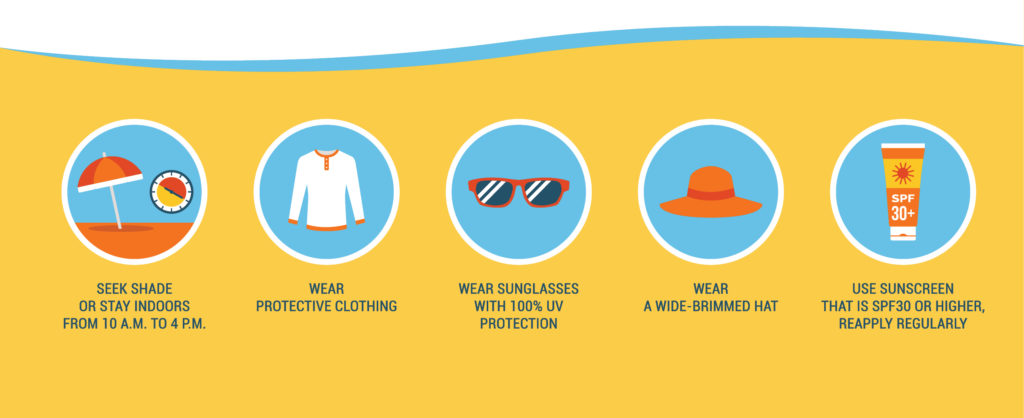Keep Your Cool While Handling Hot Weather Emergencies
By Tonya Warren
As the temperature rises, caution is advised to avoid hot weather emergencies. The very young and elderly are most susceptible to summertime heat incidents, so extra care should be exercised when dealing with these age groups. According to the Centers for Disease Control and Prevention, 600 people in the U.S. die every year from heat-related illnesses. Learn how to prevent and treat such summer dangers while enjoying these longer days on the calendar. Remember to consult your health care provider for questions and concerns regarding heat safety and your specific needs.

SUNBURN
Red, painful skin with possible blistering are characteristics of sun damaged skin, the CDC says. Stay out of the sun until the skin heals. Apply wet, cool cloths to affected areas or take a cool bath. Skincare products approved for sunburn treatment may be used for comfort measures. Do not break blisters, as this could cause infection.
STAY HYDRATED
Staying hydrated is vita. Keep a cool water bottle with you and sip throughout the day. Consume foods high in water content such as melons, tomatoes and cucumbers. Avoid beer and other spirits, as they are dehydrating.
HEAT EXHAUSTION
Heavy sweating, cool or clammy skin, fast, weak pulse, nausea and vomiting, muscle cramps and dizziness are symptoms of heat exhaustion, according to the CDC. Stop activity and get to cool shade or indoors when any symptoms appear. Loosen clothing and place cool, wet cloths on your body or take a cool bath. Drink sips of cool water. Get medical help right away if you have nausea and vomiting, symptoms worsen or they last longer than an hour.
HEAT STROKE
Red, hot and dry skin, high body temperature of 103 degrees Fahrenheit or greater, nausea and vomiting, confusion, dizziness, a strong, fast pulse and passing out are symptoms of this emergency, according to the CDC. Immediately call 911 and move an affected individual to cool shade or indoors. Loosen clothing and apply cool, wet cloths to the body or get into a cool bath. Do not give them anything to drink. Begin CPR, if necessary, while awaiting EMS arrival.
CHILDREN AND HOT CARS
According to the National Highway Traffic Safety Administration, over 900 children have died of heatstroke from being left inside a vehicle since 1998. Children’s body temperature rises much more quickly than adults, and it’s never safe to leave a child unattended in a vehicle, even for just a few minutes. In fact, it’s illegal in Texas to leave a child alone in a vehicle, no matter the length of time. If you see an unattended child, stay beside the vehicle and call 911. Placing a toy in the front seat or attaching a reminder note on the dashboard serves as a reminder you’ve got precious cargo in the backseat.
Staying wise about heat safety will help you enjoy summer, all while keeping your cool.



